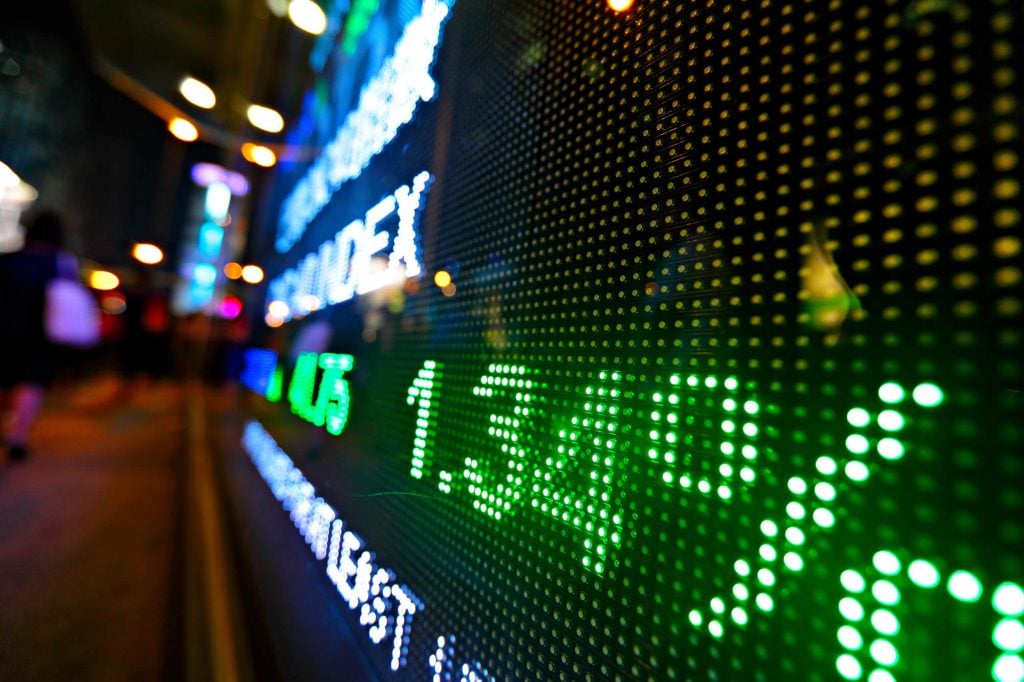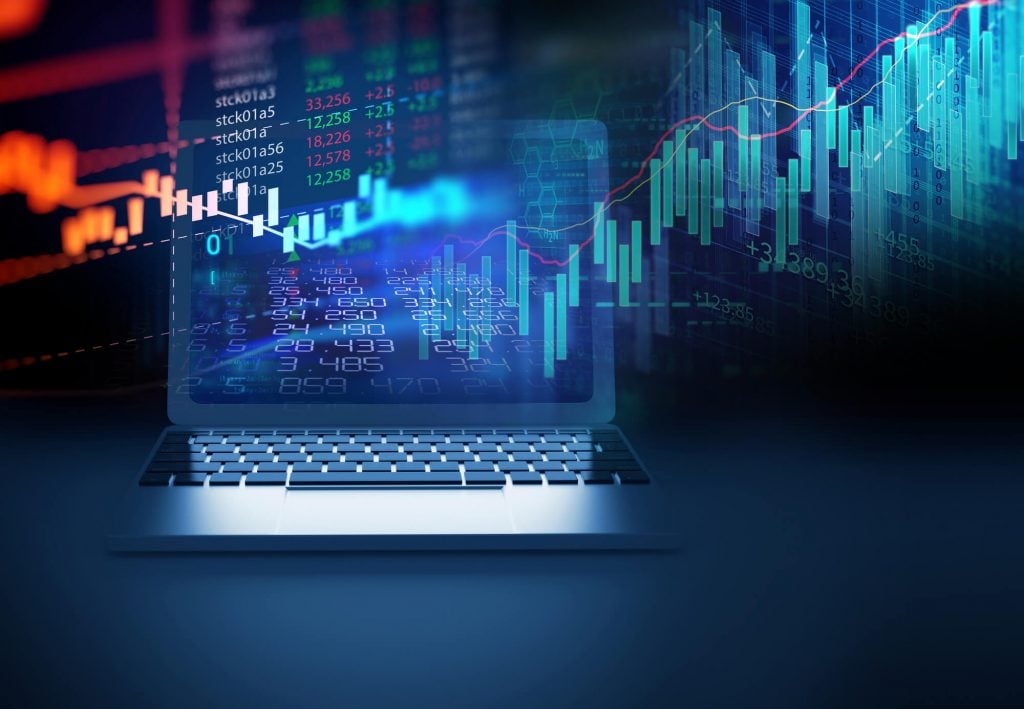
Most stock market transactions happen during normal business hours during the daytime. But more retail investors are turning to pre-market trading to take advantage of after-hours movements.
What is pre-market trading? Should you get in on the action?

What is Pre-Market Trading?
Pre-market trading is exactly what it sounds like. It’s the buying and selling of securities before U.S. stock exchanges open at 9:30 am, EST.
Technically, pre-open stock market trading begins at 4:00 am. However, most investors and brokers wait until 8:00 am, when there’s a bit more activity.
Trading volume on the stock market pre-open is quite low. Since there aren’t many investors in the pre-open stock market, traders often have a difficult time making transactions. Still, pre-open traders use the time to get a jump on certain commodities. They also try to get a feel for how the market will behave during the upcoming session.
When It Started
The roots of trading in the U.S. stock market pre-open go back to 1991. Foreign stock exchanges had already started trading before their markets opened. To compete with them, the New York Stock Exchange (NYSE) allowed investors to trade after its daily 4:00 pm close. That was the first time that traders could transact during alternate hours.
The rise of global electronic trading forced even more change. In 1999, Nasdaq, the all-electronic stock exchange, moved its opening hour to 7:00 am Eastern. The NYSE, facing increased competition from its home, countered in 2005 by allowing traders to start at 4:00 am. Nasdaq did the same in 2013.
The Process
Pre-open stock market transactions take place on electronic communications networks (ECNs). You must have an account with an online brokerage that allows pre-market trading.
Each brokerage has its own time range for pre-market transactions. Scottrade allows pre-market trading between 6:00 am and 9:28 am. TD Ameritrade only allows it between 8:00 and 9:30. Fidelity’s pre-market trading hours are 8:00 am to 9:28, with limitations. Nasdaq still opens at 4:00 am. Some brokerages don’t allow pre-market trading at all.
The process for online pre-market trading is basically the same as it is during regular hours. Traders scan for stocks and order however many shares they want.
There are a few restrictions, though. Most pre-market stock transactions on ECNs are limit orders. This means that the buyer must set the price they want to pay for the shares. When the stock reaches that price point, the order is executed. If it doesn’t reach the specified price, the order is canceled.
Limit orders are different from market orders, in which traders simply buy the stock at its current price. Most ECNs don’t allow market orders in pre-open trading. Even if your brokerage does, it’s a horrible idea. Always use limit orders in pre-open trading.
What to Expect
Pre-market trading has characteristics that make it a different experience than regular trading.
Low Trading Volume and Liquidity
There’s far less activity in pre-open trading. That’s simply because there aren’t as many participants as there are during regular market hours.
Liquidity during pre-open trading is low. Liquidity is a measure of how easily a stock can be sold without dramatic effects on its price. With fewer traders and lower volume in pre-open trading, there’s less liquidity.
High Volatility
Stock prices during pre-open trading can fluctuate wildly. That’s primarily because of the low volume. If a pre-open trader is looking to sell their stock, they will have fewer buyers. This might force them to unload their shares at a lower price than they wanted. That, in turn, could drive down the regular stock price.
Similarly, a pre-open buying surge has a bigger effect than it would during regular hours. Many pre-market buyers are open to grabbing shares at higher-than-normal prices. That drives the stock price up.
High Risk
Because pre-open stock trading is so volatile, the competition can be fierce. This makes pre-market trading much riskier than traditional trading.
Larger Bid-Ask Spreads
When a stock is less liquid, it tends to have a wider bid-ask spread. That’s the difference between the high price that traders are willing to pay for a stock (the bid) and the low price at which sellers are willing to sell it (the ask).
Companies with narrower bid-ask spreads offer popular investments. More people want their shares and there are plenty available. Because of this, buyers are more willing to pay whatever price they’re offered. Stocks with wider bid-ask spreads are more volatile.
During pre-open trading, bid-ask spreads tend to widen more than they would during regular hours.
Fewer Investor Classes
Theoretically, pre-market trading is open to anyone who wants in. In reality, only a couple of trading types dominate the pre-market.
You’ll usually find institutional investors (hedge funds, mutual funds, banks, insurance companies, etc.) in pre-open trading. You may also come across individual investors who are very, very wealthy. Both these classes are better able to afford the high risk and volatility of the pre-market.

Why Traders Use It
Given that pre-market trading is so risky and volatile, why do traders even take part in it? There are a few reasons.
Getting a Feel for the Market
Especially in the stock market, knowledge is power. The all-encompassing goal of the pre-market trader is to get a jump on the coming business day.
They want to know what the price movement will be. They want to sharpen their trading strategies for the regular market. They want to see how certain securities and sectors are likely to perform.
Pre-market trading can offer a sneak preview of what could happen between 9:30 am and 4:00 pm. Institutional investors like to prepare in advance so that they can outmuscle the competition.
Getting Ahead of Reactions to Breaking News
The stock market is heavily influenced by what’s happening in the outside world. Sometimes, these events happen after the market closes. Investors won’t see how share prices will change until the stock market opens at 9:30 on the next business day.
For example, events in the oil-rich Middle East may have a huge effect on U.S. oil stocks. Since the Middle East is half a world away, their business day doesn’t overlap much with the U.S. If an impactful news event happens in Saudi Arabia during their business hours, it won’t affect the closed U.S. stock market. But when the U.S. market opens, you may see an immediate sharp rise or drop in oil share prices.
Pre-open traders try to get ahead of these reactions. They may want to buy shares before the price goes up or sell them before it’s too low. If they’ve heard news about political upheavals, overseas events, late court rulings, or any other after-hours events, they’ll try to conduct their transactions before the rest of the market swings up or down.
Capitalizing on Earnings Reports
Some of the biggest events that shape the stock market after hours are earnings reports. Most corporations issue them every quarter.
When they do, it’s usually after the stock market closes. That’s because they know that the reports are likely to affect their company’s share price. They know that if they made announcements during regular business hours, the share price could become extremely volatile. So they prefer to let the news sink in during the evening, hoping that cooler heads will prevail and prices will stabilize the next morning.
As with overnight news, pre-market traders hope to conduct their business before earnings reports affect share prices. So they take to the pre-open market to transact before the day gets wild.
Should You Do It?
Is the stock market pre-open a good fit for you?
That depends on your stomach for risk. As we’ve explained, the pre-open trading world is volatile and competitive. Most advisors warn amateurs investors not to participate in it, at least not on their own.
But if you decide you’re going to do it anyway, keep these tips in mind.
You’re Competing with Heavyweights
The pre-market trade is filled with big-time investors. Although there are more retail investors getting into the pre-trade market, they’re still outnumbered. You’ll be going up against professionals, institutions, and very rich investors. Be aware of this going in.
You Can Only Make Limit Orders
You have to name your price for buying and selling in the pre-open market. You can’t simply click on a stock and buy it at the currently shown price. That price may skyrocket the minute the market opens, and you’ll lose a ton of cash. Limit orders prevent that.
Orders Are Only Active During the Current Session
If you make an order during the pre-market and it doesn’t get filled, the order cancels. You don’t have the option to extend the order to the next session. You’ll have to do it again the next day.
Make Sure You Have a Fast, Powerful Computer and High-Speed Internet Access
All pre-market trading happens on the Internet. If your laptop or desktop needs an upgrade, do it before you start pre-trading. You also need a reliable, uninterrupted, and fast Internet connection. Wherever your base of operations is, make sure that the wireless network is sound.

Gorilla Trades: The Smart Choice at Any Hour
Gorilla Trades helps investors to get a competitive edge with their data-driven, proven stock-picking formula. Sign up for a free trial to learn more.
